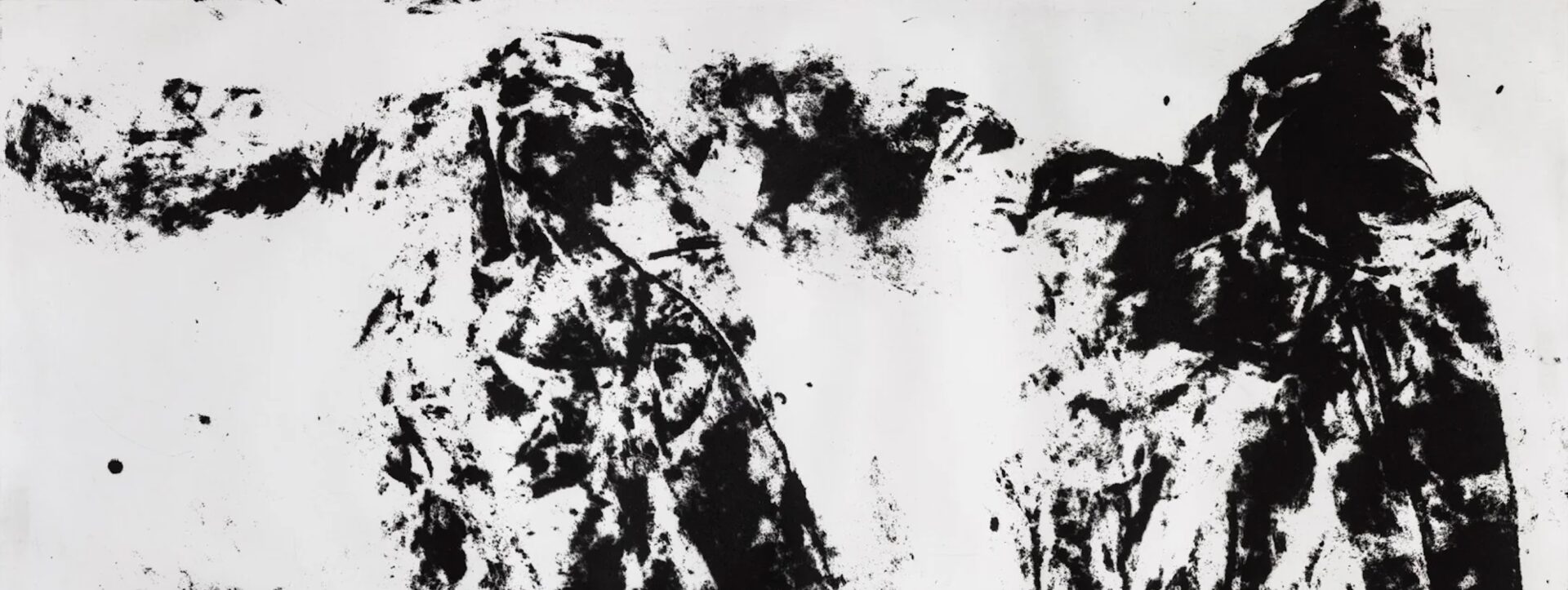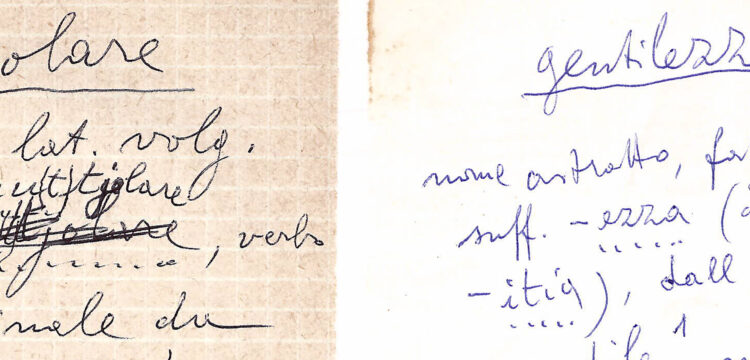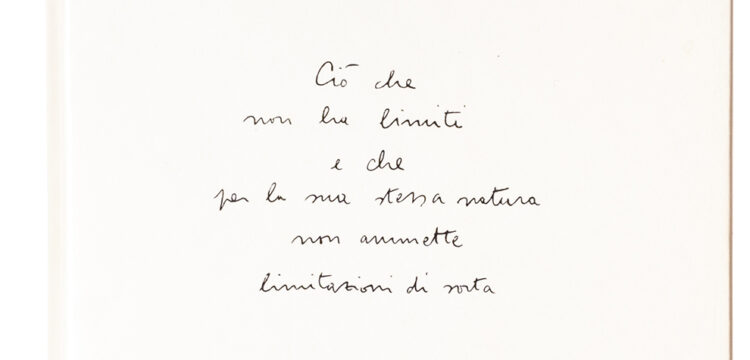The Work of Art in the Age of its Technical Reproducibility
Archive Actualized #Multipli: a conversation with Colophonarte, Magonza Editore, and Stamperia d’arte Albicocco
The third and last interview of Archive Actualized #Multipli, a special issue in Replica’s series exploring the new MULTIPLE section of Arte Fiera, involves three very different projects.
Colophonarte is a publishing house of artist’s books, founded in Belluno in 1988. Thirty years after its birth, it boasts a catalogue of over 130 titles, created with the best contemporary artists—both Italian and European—who have interpreted poems, texts, and music from literature and culture from all over the world. The books originate from unique projects but are bound together by a coherent cultural idea, a recognizable identity typical of Italian design, and by the precious contribution of great and passionate craftsmen, decisive in the realization of such special publishing works. The books are all published in limited editions, always signed and numbered, with texts composed in movable lead types, hand-printed on pure cotton paper, and handmade bound.
Magonza Editore is a publishing project that promotes and produces contemporary art exhibitions and projects in Italy and abroad, following all their ideational and operational aspects, and collaborating with the artists in the realization of unique works, graphics, and multiples.
Stamperia d’arte Albicocco, founded in 1974, is specialized in intaglio printing, producing works in which the artist’s talent is combined with the craftsmanship of the printers.
Those objects are mass-produced in order to give everyone the opportunity to enrich their visual culture by absorbing this information directly. The series of pieces can be limited or unlimited depending on the nature of the information and the technological possibilities. Valuable materials are thus eliminated if they are useless to the information, and a fairer relationship is re-established between the value of the work and the selling price. In the field of painting, for example, there are unique pieces mass-produced by hand with prices that are false in relation to the information value. The multiple operation is therefore also intended to bring a note of honesty and sociality to the art market.
Bruno Munari, Codice Ovvio, Einaudi 1971
REPLICA: Since we started working on the MULTIPLE section, a groundswell of discussion has opened up about this category, drawing a big question mark over what it means, and what it does or does not include.
Before the 1960s, the term “multiples” mostly referred to objects such as engravings, lithographs, etc. After that date, “multiplied art” refers to those works that originated from kinetic art research that combined art, industrial design, and technology, and that laid the foundations for an art made for everyone, with the aim of opening up a real process of democratization.What is your point of view?
Stamperia d’arte Albicocco: The multiple—especially the chalcographic engraving—has always been, from the very beginning, a democratic means of enjoying art. Think of the XVIth century, in the middle of the Renaissance: at that time there were no cars, no trains, and no bicycles; in short, getting around was not easy. If I wanted to see a work by Raphael but lived far from Urbino, Rome, or Città di Castello, I could not see it. But there were Raimondi’s burin engravings, reproducing Raphael’s works; these sheets went around so everyone could see the works of the artist. The same applies to Leonardo’s Mona Lisa, of which Luigi Calamatta made a burin engraving in 1857. This was an early form of democratization, i.e. giving everyone the opportunity to see the works of great artists when travelling between cities was not easy. Then, in the early XXth century, democratization changed: everyone could travel to museums to see Picasso’s works, for example, but not everyone could afford a Picasso painting. Picasso was a great engraver (and with him all the greatest artists of the XXth century), and with his etchings he gave many people the chance to have one of his works in their homes. So, I believe that the concept of democratization was born over 500 years ago and not in the 1960s.
Magonza Editore: From my point of view, engravings and lithographs fall into the category of printed graphic work, rather than multiple. They are two very different things, and of course both have full dignity, as well as, in history, admirable performers. At the very origin of this practice, which can be traced even before the 1960s, independently of the development of kinetic art, I find in the question posed, for what is my approach and sensibility, an extraneous, even annoying word: design. If one cannot but emphasize the positive aspect of the process of democratization of the work—which you rightly emphasize—I would instead like to strongly distance myself from the link between design and multiple work, as I consider it, from my personal point of view, the negation of the work itself. The latter is the result of the work of two subjects, an Artist and an Artificer, as cleverly written by Valter Rossi, a great editor and master of multiplied art that I would like to mention. His works with Burri and Fontana were a fundamental baptism for me. He taught me to remove all rules when embarking on a new publishing adventure with an artist. The creator can only rely on the artist, on his own intuition and skills, with the desire to always experiment with new techniques, and to codify new languages, to achieve the synthesis of the work (which dwells in the artist’s mind), to multiply it, and create an edition.
Colophonarte: According to the dictionary—because the language is a serious matter—a multiple (masculine noun) is a work created by the artist in such a way as to be serially reproduced in certain number of identical copies, usually marked with a number and a signature.
In my opinion, there is a certain flattery or fuss about it. A multiple is just that. Then, each artist interprets their realization according to their own language and creativity.
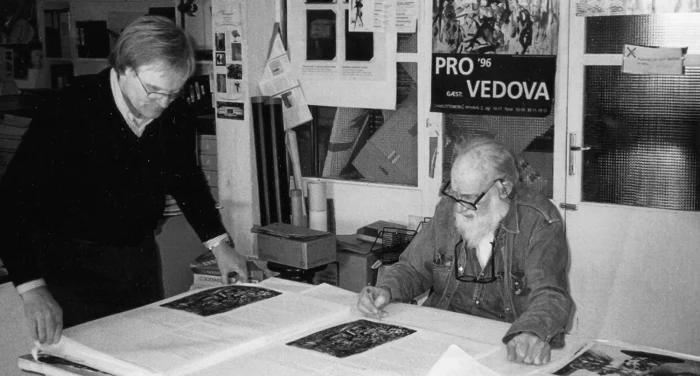
For the MULTIPLE section, you were invited to realize an ad hoc project, more akin to the realization of a small exhibition. Could you tell us what you have achieved? What aspects of your research and work did you show to the public?
Albicocco: Our project for Artefiera 2023 is characterized by large-format pieces, printed in a very limited edition (20 copies maximum), some of which, like the works by Luca Pignatelli, were created with the help of collages prepared by the artist himself and applied at the printing stage, making each sheet unique and different from the others. Some of the selected artists are Piero Pizzi Cannella, Emilio Isgrò, Jannis Kounellis, Giovanni Frangi, Luca Pignatelli, Safet Zec, and David Tremlett.
Magonza: We are delighted with the quality of the work we have done with Andrea Mastrovito, who adds an important piece to our series of works. Andrea has a very particular approach to “drawing”, protagonist in all his works––which vary from cinema to installation to inlay and stained glass––and we believe that this work too has allowed him to experiment with a different language, but not to betray his initial position and coherence. This ability to stay on the same track with an aesthetically varied production is the hallmark of great artists; Andrea is one of them, and we are proud to have supported him in this production.
Colophonarte: We are publishers of artist’s books by trade. And I use the word “profession” because that is exactly what it is. Each book is a multiplied object, but also unique because each edition is born from a dedicated project, in content but also in form and execution. In our books, the texts are always multiplied—albeit in minimal editions—while the accompanying works change from time to time, and are declined in multiples, variations, and unique pieces.
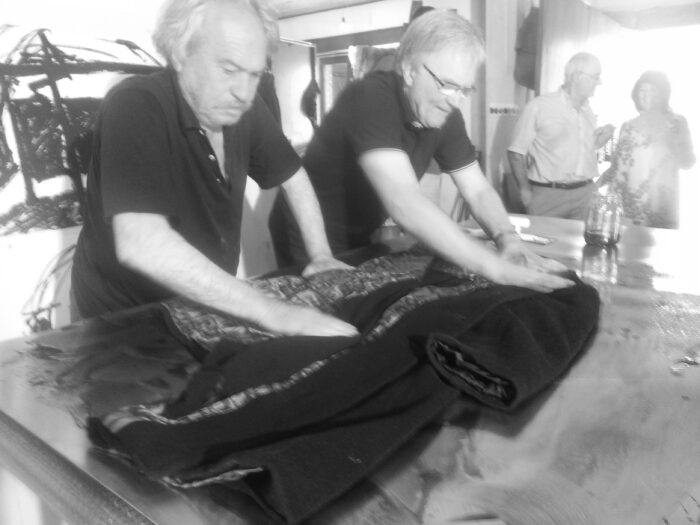
Among your proposals, what do you think is the multiple that should not be missing from a collection? What do you think is the most coveted object of desire?
Albicocco: For us, they are all equal, as children are! But if we had to choose one really important piece, both for its name and for the history of this edition, for the acquisitions made by very important galleries in the world… in short, without a shadow of a doubt, we would pick the Coats by Kounellis. They are twelve works measuring 1×2 m, each printed in twelve copies. The matrix was made using the carborundum technique. I will never forget the days spent in the Maestro’s studio in Umbertide.
Magonza: Everything can be missed and nothing can be missed. Every collection can have a meaning, and it is the search, the journey, and the discovery of a collector. I don’t see one of our graphics or multiples as better than another; what I do see is a consistent approach on our part as publishers, a way of understanding this work in an active and experimental way, supporting the artist in the working process with enthusiasm and competence, knowing that every time everything has to be rewritten.
Colophonarte: Our catalogue consists of almost 140 artist’s books, and some of these are now out of print… It is difficult for me to identify just one which is indispensable. Certainly, those composed of many different textual and artistic interventions represent small collections of contemporary art.
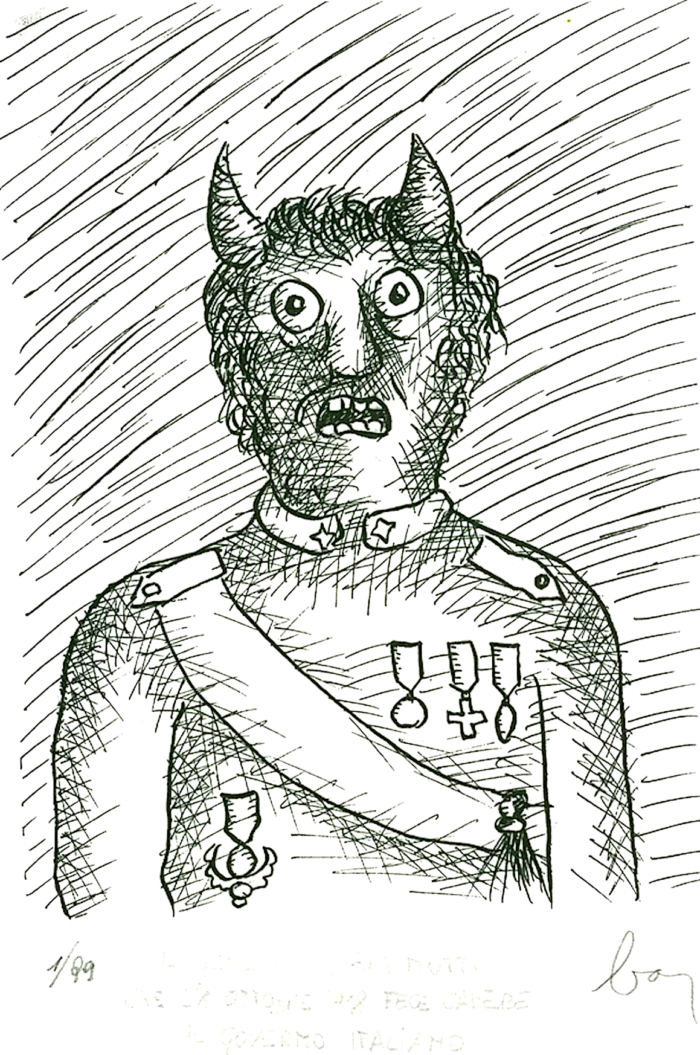
The Albicocco print shop has been active since 1974 and has collaborated with a large number of prominent artists, from Nunzio to Sandro Chia, from Peter Halley to Carla Accardi. Specifically, which printing techniques do the artists you work with use most often? How do you respond to the criticism that is often made to this technique as a reproduction of pre-existing works of art?
Albicocco: In contemporary art, intaglio printing is never a reproduction of pre-existing works. And this is what makes it special, unique, and important. In fact, the artist, with their own hand, engraves, using various techniques, a zinc or copper plate, creating a unique, true, and unedited work on this matrix.
Then the printer prints the matrix on each sheet, inks it, cleans it, etc. In short, they are not reproductions at all! This confusion that has arisen with the various techniques of multiples making has done a lot of damage to our work, intaglio, which involves the creation of real works; they are printed in a few copies, and involve very complex and time-consuming work on the part of the artist. There are artists who take a couple of days to make an oil on canvas, perhaps, while to engrave a matrix and get to the bon à tirer––the first good print––takes months.
The techniques that are most commonly used are aquatint, etching, soft-ground etching, and carborundum; they have developed over the centuries and, in fact, have remained pure as they were in the past, in the processes of matrix making, materials, and printing techniques. Think how wonderful it is to use such ancient, even centuries-old techniques to make contemporary art in 2023. For me, it is magic.
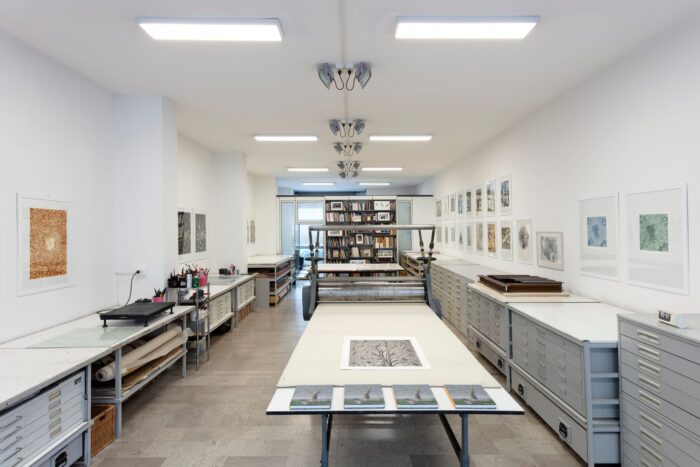
As a publishing house, Magonza works on multiples by artists such as Jannis Kounellis, Claudio Parmiggiani, Sergio Lombardo, Paolo Icaro, Marco Gastini, etc. Your contribution ranges from a purely technical and organizational dimension to collaborating with the artist in their research. What can you tell us about this operational aspect and dialogue with artists?
Magonza: It is difficult for the initial expectation or the first idea of the artist to get to the final work. Our commissions are never to translate a sketch, a drawing, or a painting into something printed, more or less well, or with amazing techniques. Our job is to actively collaborate with the artists, to whom total freedom remains with respect to the result they want to achieve, always offering prodding and attention to the direction of their ideas, as well as providing them with possible technical tools, often to be codified and developed specifically for the work, that can become their brush, their pencil, their chisel.
Looking at the long list of artist’s books you have produced, one can see how, on many occasions, an artist is called upon to enter into a dialogue with the poetic text. To give a few examples, a glossary by Dacia Maraini is placed side by side with the works of Grazia Varisco, Cielo D’Alcamo’s poem with the works of Turi Simeti, but moving away from the more strictly poetical ones, in your catalogue there are also pages from Mario Botta’s diary placed side by side with Enzo Cucchi etc. Could you tell us how the desire to give form to these “dialogues” came about?
Colophonarte: Publishing artist’s books is always a dialogue between different languages: textual, poetical, musical, and visual. If this dialogue is missing, it is not an artist’s book.
We are inspired by a form of expression that originated in the late XIXth century in France.
For us, the book is not a pretext for giving new form to an art object. The book is at the center of the project, an integral part, and prime mover. Everything revolves around the book in its most classic and traditional declination. So much so that for us it is crucial to select the paper, which must be 100% cotton and handmade, to structure the layout, which must follow classical dictates, to manage the artisanal typographic printing with leaded movable type, to bind and package the volumes one by one with the support of specialized craftsmen.
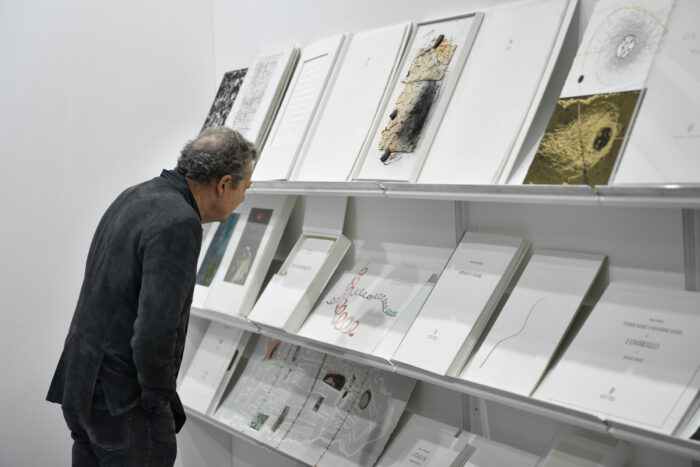
Another new feature of ArteFiera 2023 is the Colophonarte prize, which this year was won by artist Elena Mazzi. This prize is a great opportunity for artists under 40, who will be able to compete and produce an artist’s book with one of the most iconic and long-established publishers of multiples and books in Italy. Could you tell us more about the rules of the award, the composition of the jury, and the characteristics and timing of the book realization?
Colophonarte: The jury was composed of three members: Turin-based lawyer Riccardo Montanaro, a bibliophile and art expert, as well as a collector, who also has an important collection of multiples, rare books and artist cards; and two art historians with a strong specialization and focus on contemporary art and young artists, Olga Gambari, gravitating around Turin, and Serena Carbone, more connected to Bologna, who was also a consultant for MAMbo.
The composition of the jury was deliberately mixed, with a preponderant female component. We have absolutely tried to work in these terms: certainly, in the last twenty years Turin has been a bit of a cradle for young people, and for the freshest and most innovative art, so inevitably two out of three jurors come from there. The third, on the other hand, significantly gravitates around Bologna, which is part of the history of contemporary art in Italy, of contemporary art narrated through fairs.
The winning artist of this first edition, Elena Mazzi, will have a year to work on her artist’s book, and then present it at Arte Fiera during the next edition (2024), when the next winner will be announced. There will be two events at the same time. The artist’s book produced in the coming year will not be pretentious and plastered like the traditional ones. It is specified in the terms of the prize that it will have a fresher and more streamlined structure. The artist will also be able to intervene in the choice of the texts, which is usually our prerogative. The format will not be large, and we will try to create a product that is accessible, so it will be published in two versions: 500 copies in the traditional one, and a special edition in a more limited number. This to give the artist the opportunity to spread her work and her language, and at the same time to make the most of it with a very limited edition of the first 50 copies.
What will the book be like? We don’t know, because each artist has a personal language and chooses a personal way to tell a story.
So, there will certainly be critical texts, and there will certainly be interventions, including photographic ones, but it is all to be built up, also because this is the first year. An important article will also be dedicated to Elena Mazzi in the upcoming issue of our magazine Colophon, where we talk about art books and so on. We will dedicate six pages to the winning artist as to those who were awarded with the other two mentions, Fabrizio Cotognini and Shafei Xia. All this was possible also thanks to the fundamental support of Arte Fiera and the gallerists who have brought in a really nice selection of young people this year.
It is not so easy to select quality artists, and it is not our job, so we turned to those who, like Olga, Serena, and Riccardo, do it with more familiarity and professionalism. The goal was also to create an editorial series to support the work of young people, so we have chosen a path that may not be the most immediate, but we hope will be the most complete and the most serious.
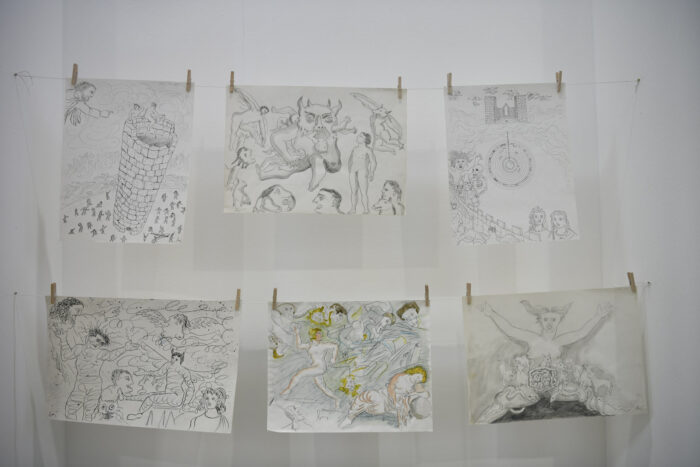
One of the reasons that prompted Simone Menegoi, Artistic Director of Arte Fiera, to inaugurate this new section is to make the fair a more inclusive moment. As exhibitors, what is your point of view with respect to this stance in a context mainly linked to the art market?
Albicocco: I speak for what is our trade. Only in Italy there are no fairs related to multiples, especially to intaglio engravings. England, Germany, France, Mexico, and the United States are countries where there is a strong interest in quality editions. There are fairs, art galleries, collectors, curators working in this specific field. In Italy, where these techniques were born, there is much less interest in that, and it is so because of a cultural decline that is frightening, as an offset print is compared to an etching; “oh, it’s just a print” I heard people saying at the fair. I would have liked to ask these visitors if they knew what they were looking at, if they knew the techniques, the effort, the dedication that it takes to get to that work, before saying “it’s just a print”. Fortunately, there are, however, many enlightened artists and collectors who understand the historical and cultural importance of chalcographic engraving, and who keep our industry alive. Especially the artists, without whom we would have nothing: they are our driving force, our strength; it is thanks to their dedication, their humility towards us, and their support that we work and together produce what are, to all intents and purposes, masterpieces. But the credit is all theirs. The printer, as Guido Giuffrè wrote, interprets, shares, and in sharing disappears. Like a musical interpreter, his stature lies in his understanding of the text and his ability to render it intact, not to add to it.
Long live Artefiera, and long live the MULTIPLE section.
Magonza: Graphic works and multiples, like photography and drawing, are not second-class art, and their collecting not infrequently reaches levels of excellence. A great collection is not a collection of works of exorbitant value, but first and foremost a manifestation of the search and need for art to be part of our lives, an indispensable part of those who embrace it. This is the point where the Fair directed by Menegoi, by opening up to the dissemination of great works at an affordable cost for many, best aspires to that process of democratization that underlies the idea of the multiplied work.
Colophonarte: Simone is a wise and observant man, who has grasped a fundamental need in this market. That is: to lower the average age of its audience, and to train the next generations of collectors.

